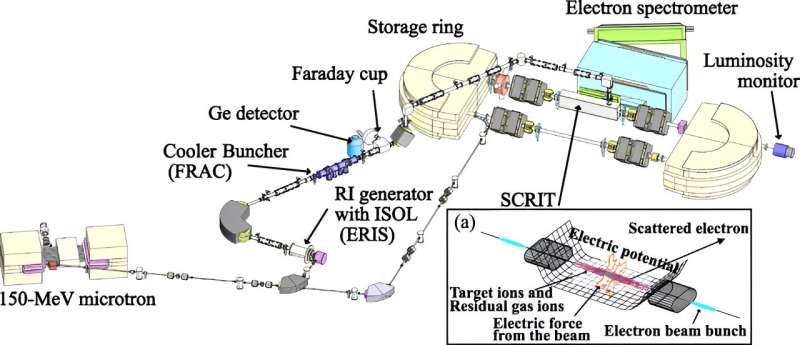The Daily Observer London Desk: Reporter- John Furner
A team of chemists and physicists with members from Kyoto University, the Nishina Center for Accelerator-Based Science, RIKEN, Rikkyo University and Tohoku University, all in Japan, have for the first time observed electron scattering from radioisotopes that do not occur naturally. The study is published in the journal Physical Review Letters.
Ever since the discovery in the 1950s that atomic nuclei have a finite size—on the femtometer scale—researchers have been looking for ways to create pictures of atomic nuclei to learn more about their structure. Such a device would necessarily have to be a type of femtoscope. In this new effort, the research team built a system that represents the realization of such a device.
The research team began with a particle accelerator—it was used to energize a group of electrons, which were directed to smash into a block of uranium carbide. This resulted in the production of a stream of cesium-137 ions. The ions were then directed to what the team describes as a self-confining radioactive-isotope ion target (SCRIT) system.
Their system trapped the ions in a three-dimensional space aligned with an electron beam. An overlap was created between the ions and electrons in the beam, which allowed for collisions between them. The researchers then used a magnetic spectrometer to record the interference patterns that developed—a means for recording the electron scattering.
The system marks the first time that such scattering has been recorded and observed. It also opens the door to new research avenues as the same system can be used to study scattering with other types of nuclei, most particularly those that are short lived. The research team also points out that their system was able to demonstrate the properties of a femtoscope—an oscilloscope that operates on the femtometer scale. They suggest that it could ultimately be used to develop a common, unified theory to describe the structure of atomic nuclei.



